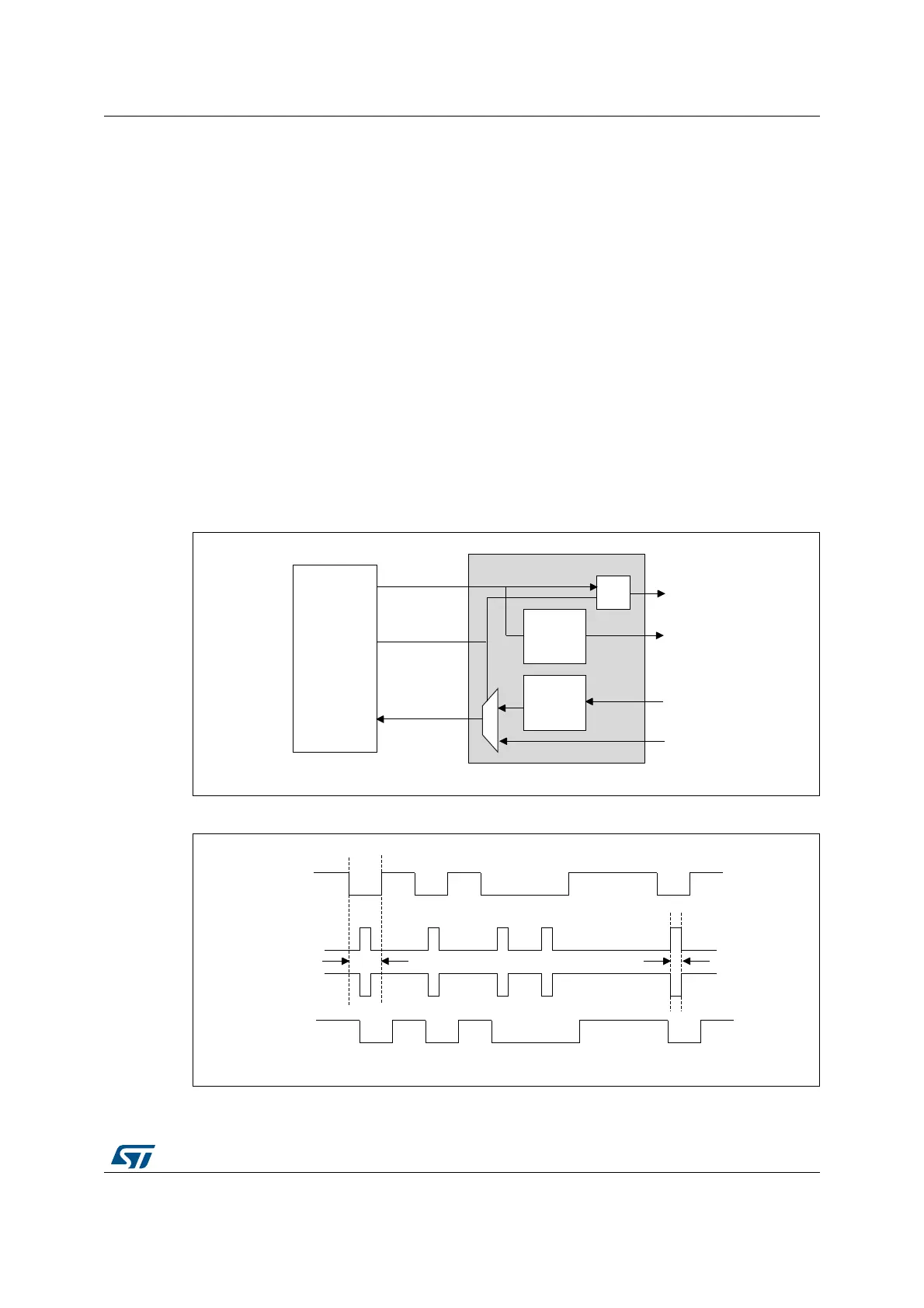RM0390 Rev 4 829/1328
RM0390 Universal synchronous asynchronous receiver transmitter (USART)
845
IrDA low-power mode
Transmitter:
In low-power mode the pulse width is not maintained at 3/16 of the bit period. Instead, the
width of the pulse is 3 times the low-power baud rate that can be a minimum of 1.42 MHz.
Generally this value is 1.8432 MHz (1.42 MHz < PSC< 2.12 MHz). A low-power mode
programmable divisor divides the system clock to achieve this value.
Receiver:
Receiving in low-power mode is similar to receiving in normal mode. For glitch detection the
USART should discard pulses of duration shorter than 1/PSC. A valid low is accepted only if
its duration is greater than 2 periods of the IrDA low-power Baud clock (PSC value in
USART_GTPR).
Note: A pulse of width less than two and greater than one PSC period(s) may or may not be
rejected.
The receiver set up time should be managed by software. The IrDA physical layer
specification specifies a minimum of 10 ms delay between transmission and reception (IrDA
is a half duplex protocol).
Figure 296. IrDA SIR ENDEC- block diagram
Figure 297. IrDA data modulation (3/16) -Normal mode
6,5(1
06Y9
86$57
25
6,5
7UDQVPLW
(QFRGHU
6,5
5HFHLYH
'(FRGHU
7;
5;
86$57B5;
,U'$B,1
,U'$B287
86$57B7;
06Y9
7;
6WDUW
ELW
6WRS
ELW
%LWSHULRG
,U'$B287
,U'$B,1
5;

